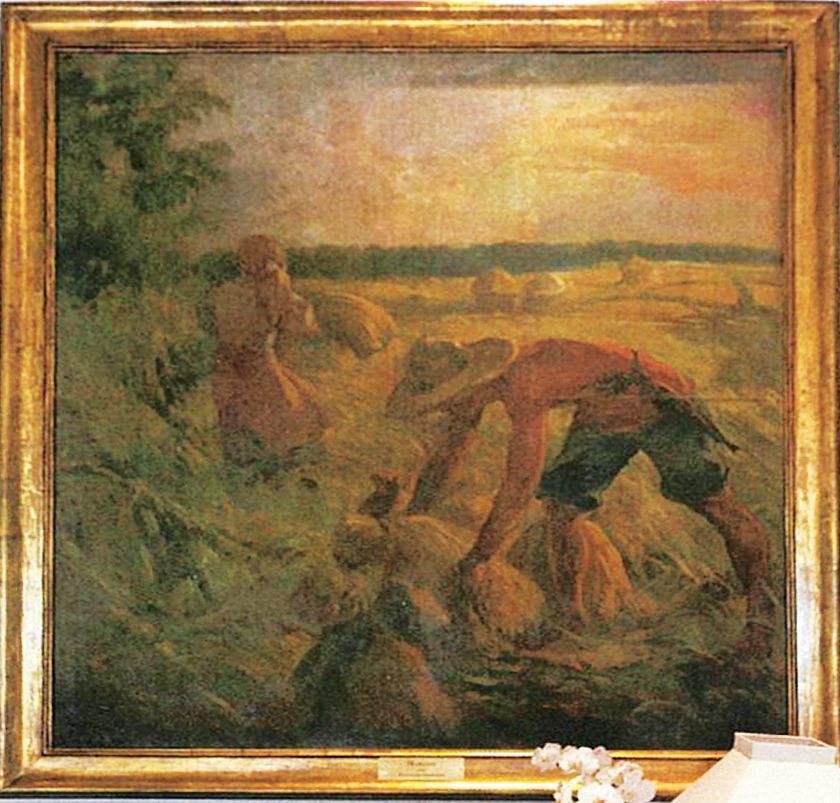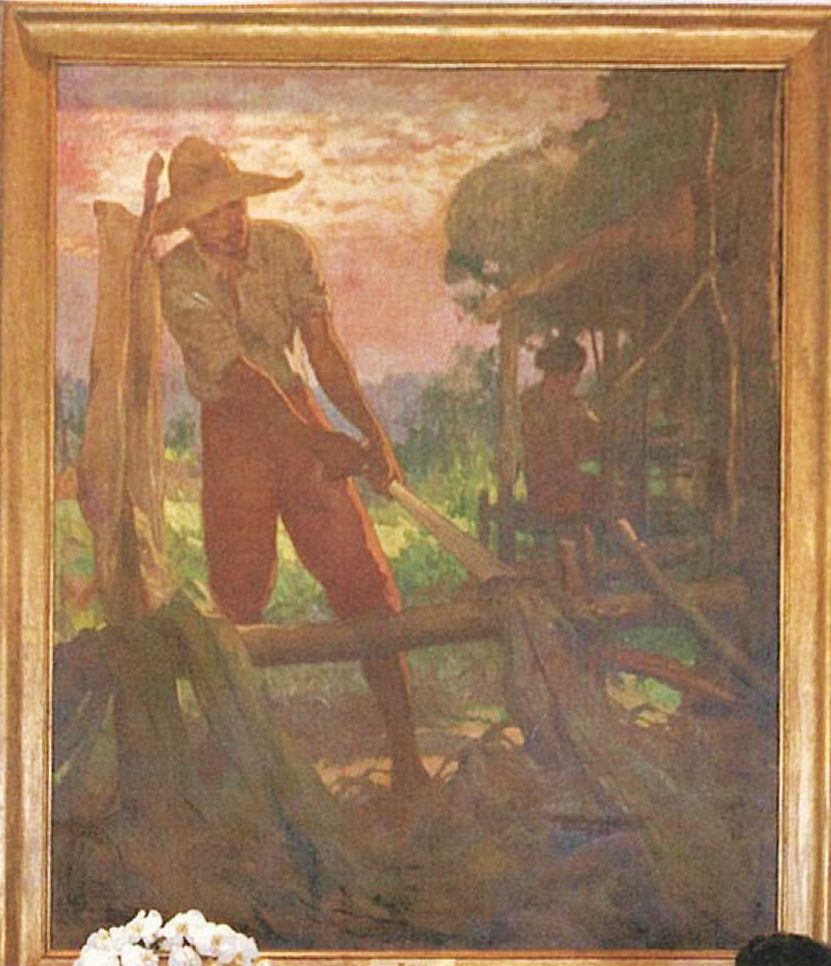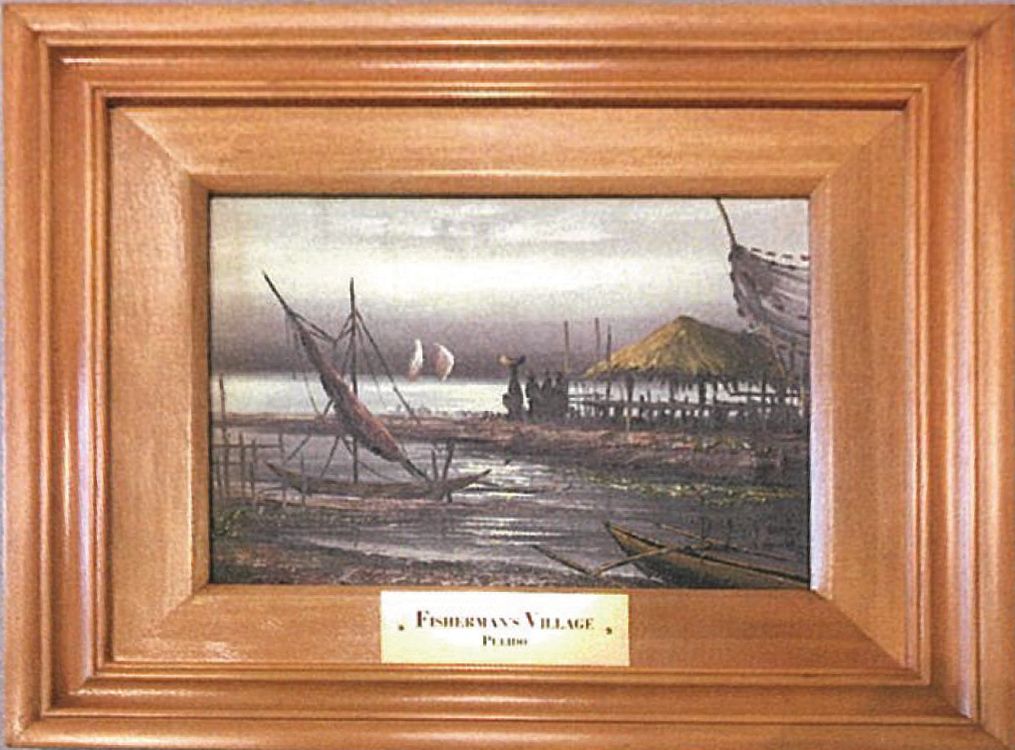From collectibles to corner tables
Inside Bahay Pangulo with its veritable collection of paintings and plain things
By Dom Galeon
In terms of proximity to power, both literally and figuratively, Bahay Pangulo is as close as one can get. Located just across Malacañang Palace, Bahay Pangulo provides an unparalleled view of the seat of Philippine government.
Recently, the public has been given a peek into the presidential villa, a couple of years after its renovation after the June 2022 earthquake that tore down its older structures. And what a display of presidential—as well as historical and cultural—beauty it was.
With a tour of the Bahay Pangulo came an inventory of every object inside the compound, which include enduring tokens of Filipino culture, such as the Fernando Amorsolo paintings hanging on its walls, to a curious assortment of everyday items one would perhaps not expect to find inside a house made for the country’s most powerful man and his family. A list provided by the Office of the President carefully documents each of these items, with details about their provenance or how they came into the presidential household.
Different strokes
Although not huge, it is difficult to ignore the three Amorsolo paintings at Bahay Pangulo, as these are unmistakably the works of the country’s first National Artist—with his signature stroke and subject choice. Two of these have the same title, “Harvest,” showing farmers working in the fields (one symbolizing the Visayas and the other Mindanao). Both artworks, which were exhibited at the Paris Colonial Exposition in 1931, feature Amorsolo’s earlier style. A third piece, entitled “Sunset,” although not signed, has been attributed to Amorsolo.

A number of the other paintings inside Bahay Pangulo follow the Filipino master realist’s themes featuring rural landscapes and rural folk. One such piece by Fabian Dela Rosa portrays a scene of farmers planting rice, hence the title “Planting Rice.” This 1921 piece is a 109 x 190.6 cm, oil on canvas version of a 1904 original that won Dela Rosa a gold medal at the Saint Louis International Exposition.
Perhaps the reason why several of the pieces present at the presidential resthouse follow this theme is because it was quite common at the time these artworks were made, mostly in the early post-war period. Other such examples include an oil on canvas art piece by Elias Laxa, entitled “Shell Gatherers,” and one signed by a certain Cuervos, entitled “Country Scene.”
Speaking of recurring themes, a curious piece of art in the collection is one by Pulido Sanchez. Active during the 70s, Sanchez developed a style that exaggerated vertical shapes—stilts that turn into very long sticks, circles stretched into oblongs, etc. Apart from these more modern works, it would seem that he also had a favorite subject: a fisherman’s boat and a nipa hut on the side, with the sea’s horizon as a backdrop. One such piece, entitled “Seascape,” had been put on the block at one of the country’s auction houses. Another can be seen on eBay. And still another is listed as sold on Etsy. The one that is part of Bahay Pangulo’s collection is called “Fisherman’s Village,” and seems to be older than the others mentioned.

Moving on from the real to the surreal, three paintings by Juvenal Sansō in the collection serve as good representatives of the period. Two are tagged with the title “Flowers,” and the third piece is called “Glow and Blush” (1993). These are very Sansō indeed, as they show subjects—flowers—the master artist has portrayed on numerous occasions, in his signature textured vividness that mixes perception and reality.
In between the real and the surreal, one finds the obras of Betsy Westendorp (de Brias). Four of her paintings are included in the Bahay Pangulo collection, a mix of landscapes and figures that capture the delicate quality of Betsy’s art. One of these, interestingly, comes with a ₱1.4 million tag—a piece called “Reflections,” a 253 x 201 cm oil on canvas, which was issued under the name of former custodian Crisostomo Pantoja, and acquired on April 16, 2019. The other three artworks are “Otoño” (1978), “Various Orchids” (1981), and an untitled oil on canvas piece that depicts flowers in bloom.

Also in the collection are pieces by Cesar Buenaventura, Justin Nuyda, Raymundo Valencia, as well as print reproductions from the “Fiori Romani” series of 17th century artist Jacobus de Rubeis. There are also a number of artworks whose provenance are now unknown.
Different folks
There is no denying that, with its collection of artworks, Bahay Pangulo is a symbol of Philippine heritage. But, as the saying goes, a house is not a home without family—or the people who live in it. And with the people who live in a home come everyday household items. In this regard, the presidential rest house is no different from many other Filipino households.

Included in the list of objects inside Bahay Pangulo are furniture made by some of the finest artisans from Pampanga and Cebu. These are found in the bedrooms and common areas of the house. Inside the bathrooms, there are quirky pictures that display pop culture icons from the 60s and 70s, which the First Lady herself bought from London. These were then framed in Recto.
Even more unassuming are the objects bought from IKEA Pasay, the SM Store, and S&R, just to name a few. Most amusing are the bathroom floor mats and rugs bought from Shopee—the inventory even includes a link to these items’ pages on the online shopping platform.
In this sense, Bahay Pangulo is both a museum and amusing. Inside the living spaces of the presidential residence, one can find ordinary day-to-day objects sourced from the most common, unassuming places, as well as works by some of the most notable artists and artisans in the Philippines.
As far as presidential symbols are concerned, Bahay Pangulo is among those that can truly inspire respect for heritage and history in a uniquely elegant simplicity.